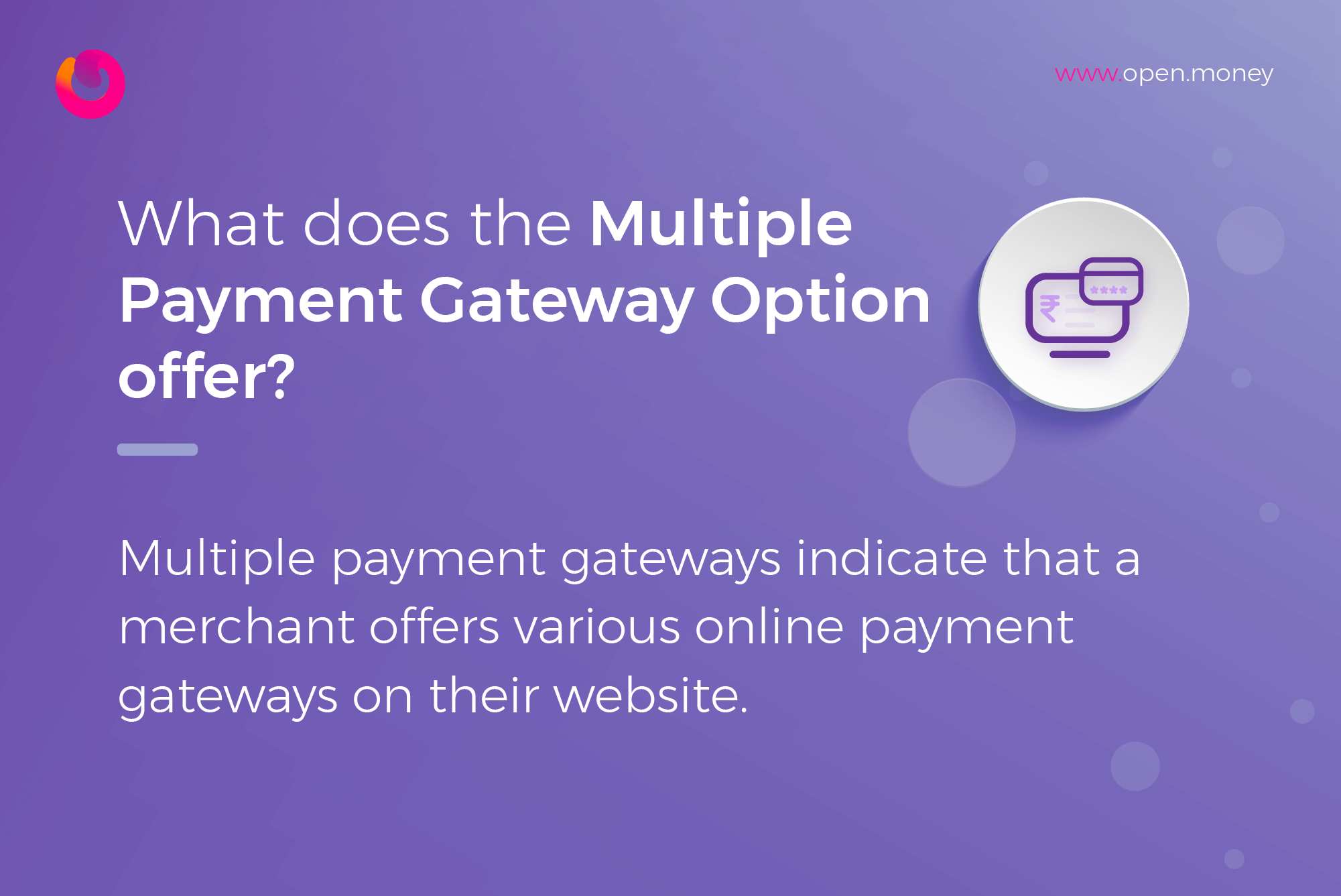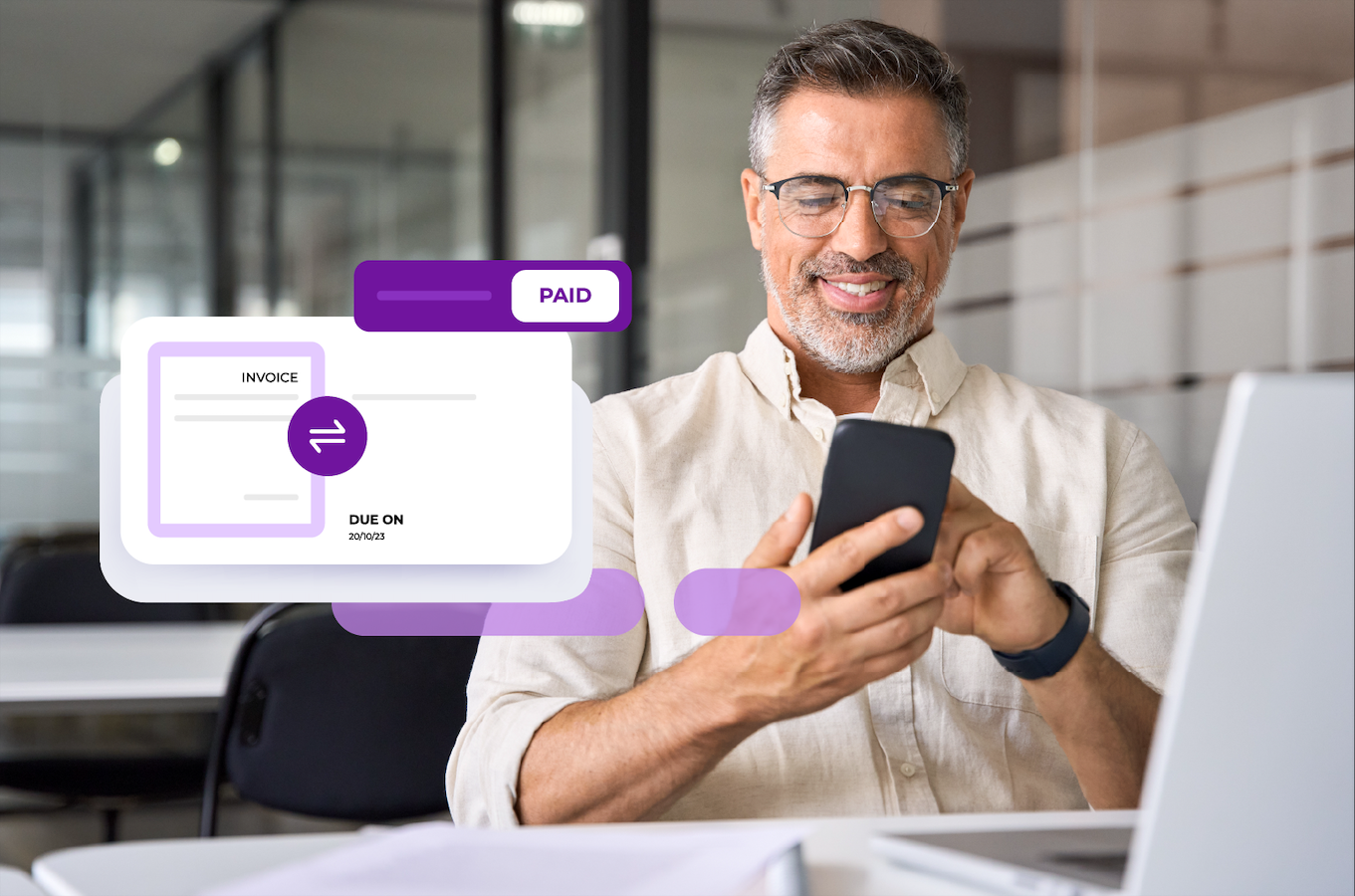Payment gateways are the ultimate go-to for both B2B and B2C businesses’ websites and apps as they ensure your company gets the benefit out of the online payment collection process. Once new customers start availing of the services, offering multiple payment gateways becomes inevitable.
But as we all know, not all payment gateways work effectively all the time. Some may work less effectively or have more frequent downtime than others.
With multiple payment gateways to choose from, customers can opt for the perfect transaction route in the region as per convenience. While adding multiple payment options and gateways is the need of the hour, it has its pros and cons.
Before we dive into the pros & cons, let’s delve into what are payment gateways and why to use them.
What are multiple payment gateways?
A payment gateway is a front-end technology that collects and transfers payments securely from the customer to the merchant or business. Multiple payment gateways indicate that a merchant offers various online payment gateways on a single website or app and by integrating them, your business can provide higher customer satisfaction and collect instant settlements.
Why use multiple payment gateways?
Multiple online payment gateways come with an assurance that if one of your payment gateways is experiencing a low success rate or downtime, customers can use an available alternative. This increases the rate of successful transactions for your business.
As mentioned earlier, multiple payment gateway integrations have their pros and cons. Let’s have a look at them as they will help you make a more informed decision for your business.
The pros of having Multiple Payment Gateways
1. Increases customer satisfaction
For a business, there’s nothing better than achieving customer satisfaction. By offering multiple online payment gateways, you can build a strong trust factor between your business and customers.
Customers wouldn’t want to fill in the bank details on a payment gateway that they haven’t heard of before. So when they visit the checkout page and see more than one payment gateway to choose from, they opt for the most-used payment option.
2. Boosts sales
As a business, you can make small changes to take a plunge into the global marketplace. Research suggests that on average, 68.63% of online shopping carts are abandoned before purchases are completed, but 63% of those are recoverable with the right set of offerings. These statistics emphasize the importance of proper payment gateway integration for websites and apps.
Generally, for popular e-commerce websites, location-based shopping isn’t a problem. So customers can pick products of their choice and get them delivered at any given time. But a single payment gateway isn’t enough to process payments from different regions. For collecting payments from customers, merchants offer multiple online payment gateways on the platform.
3. Helps run payments smoothly
Technology influences most parts of our life. So we also need to have alternate solutions for business in place to avoid any technical or network problems that come our way. As it’s possible for payment gateways to experience some downtime too, when a single payment gateway fails to process payments successfully or doesn’t function properly, the customers can always move to another payment gateway.
4. Administers analytical data
Every payment gateway offers a unique database to the seller. And since the relevant data differs, it serves a different purpose for businesses. It helps merchants to make better decisions and improve sales through careful analysis of the available data.
The cons of having multiple payment gateways
1. More payment gateways equal more processes
Integrating multiple payment gateways is better for businesses but includes different levels of integrations. You know what this means, don’t you? It’s time-consuming and may cause issues after integration sometimes. Since merchants usually set up payment gateways on the website, the documentation is rather extensive.
2. It’s expensive!
Setting up multiple payment gateways can cost a fortune. And the amount may increase depending on how much you spend on tracking or processing fees. Businesses often try to avoid such situations by enabling combined payment services as it essentially provides an option to the customer to pay for the products/services in part credit and part cash.
3. Includes extensive analytical data
This one depends on your accessibility to resources and bandwidth. As a growing business, you will need to adopt multiple payment gateways to collect your payments smartly. But this includes overseeing all kinds of analytical data. It is taxing and requires a separate reporting system to look after them.
4. Requires a collector failover plan
Integrating multiple payment gateways means planning for collector failover. Say, payment gateway 1 fails in processing a payment. What’s the next move? The merchant needs to look at how to go about redirecting the customers. Do businesses directly request the customers to head to payment gateway 2 or 3? This process will require some solid research as it may affect the conversion rates too.
So businesses need to carefully think it through to decide on the best redirection source to reduce the number of failed transactions.
5. Includes more operational challenges & resources
Setting up multiple online payment gateways on the website may cause far too many operational challenges. One such scenario is when the amount is debited, but the transaction isn’t processed.
This includes back and forth, and that’s where businesses need an all-hands-on-deck mindset. Moreover, you will need more IT development resources to see the operations through. Usually, the gateways have complicated integration processes and so there may be more failures than usual. Further, it pushes businesses to employ more people to ensure that the gateways function smoothly.
For those interested in making your website wholesome by including multiple payment gateways, here are some bonus questions to give you some additional intel!.
How can multiple payment options with gateways be integrated into a website?
Whether you’re offering your products or services via a website or without, you can set up multiple payment gateway integrations together at once and route them selectively. This way, you can narrow down which payment gateway is used the most and in what region.
What are the essential features to look for while integrating multiple payment gateways?
1. Merge reports on one bookkeeping platform
Multiple payment gateways deliver different analytical data. Businesses must use one single bookkeeping system to consolidate the information generated. So if you’re looking to adopt multiple payment gateways, choose the right ones that can be integrated with the bookkeeping platform that you use. This will help you auto-generate sales reports effortlessly.
Automate bookkeeping with Open, and receive insights on payments, settlements, cash flow, refunds, and more.
2. Offer more payment modes
It’s great that you’re integrating multiple payment gateways. Are you wondering how to make the payment process more seamless for customers?
Offer multiple payment options. Since every customer is different, their payment means may vary as well. So, by including more payment modes and payment gateway integration for websites or apps you can reach more customers and improve your customer experience.
Payment gateway integration for websites or apps with Open will give you more flexibility on payment modes. Customers can then choose between cards, internet banking, UPI AutoPay, or others. Make sure you set up a payment gateway that enables you to give your customers more payment options.
3. Be cost-effective
Every business looks for a wise investment. It makes no sense to install a payment gateway that’s expensive and has additional processing fees. So, select payment gateways that are high on functionality and budget-friendly but don’t compromise on quality. You can look for MDR (merchant discount rate) for the payment means across different payment gateways before opting for one. This will help you to lower the total amount you have to pay to the payment gateway with each transaction.
4. Must have a good success rate and timely support
If you select a payment gateway with low success rates, it may affect the conversion rates negatively. Integrate one that offers a high success rate. Moreover, choose the best payment gateway that offers good customer support when and if you face any server downtime.
6. Swift and mobile-friendly
Today, people generally use mobile phones to make payments. So, ensure that the payment gateway you integrate is mobile-friendly. This will help your customers to make fast and hassle-free payments.
How you can go about integrating Open’s payment gateway on your website or app
With Open, you can integrate a payment gateway in two simple ways:
- Applicable for website users, create a payment token using create payment token API. And sign up to generate your unique sandbox access key & secret key from the Open dashboard.
- Integrate Android & iOS SDKs to collect payments with Open on the app front.
Open makes the process smooth when integrating and managing multiple payment gateways for business. You can add, set up, and optimize all your payment options from a single dashboard. And the best part is that you can increase your sales and retain customers by keeping an eye on all the transactions from one place.
Before you get started, weigh out the pros and cons of having multiple payment gateways on your website, and adopt the best payment gateway(s) for your business.
Related Articles –
What is Neobank? Everything you need to know in detail!
How neobanks are defining the future of banking
How small businesses can collect online payments without a website on Open?
Top 10 recurring payment challenges faced by businesses
Open for freelancers: Accept international payments like a pro






